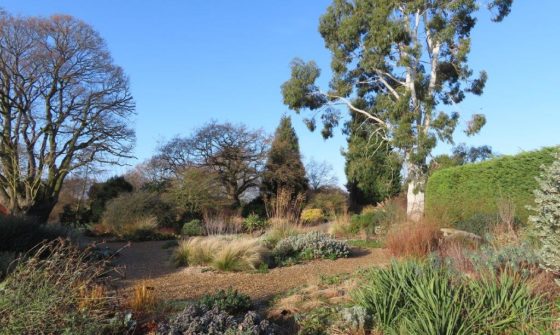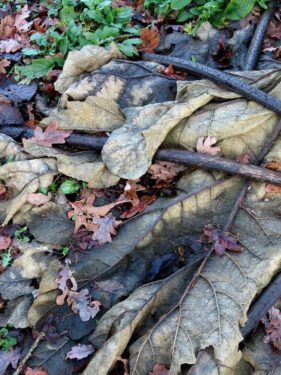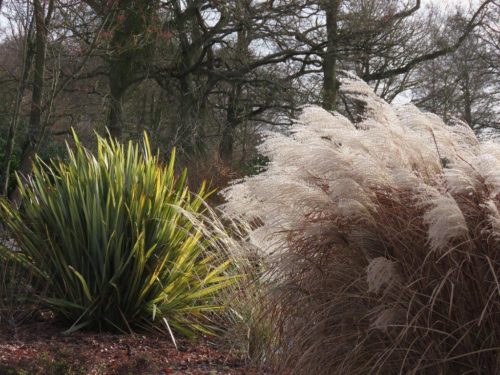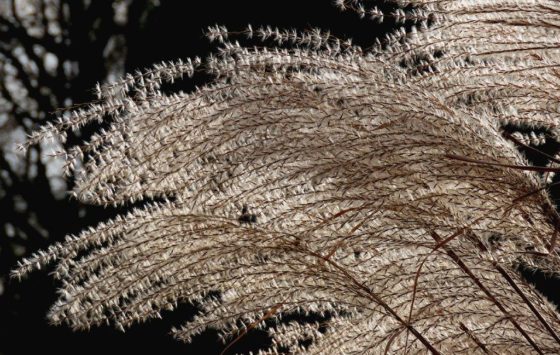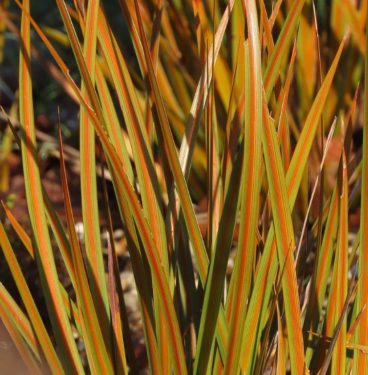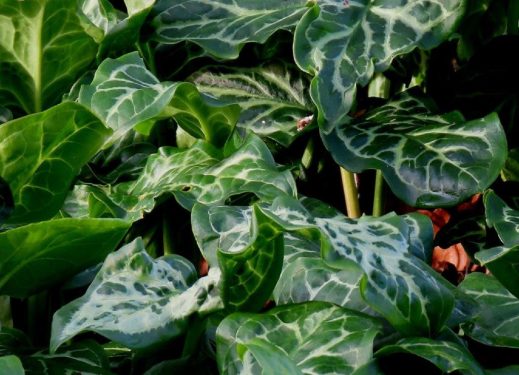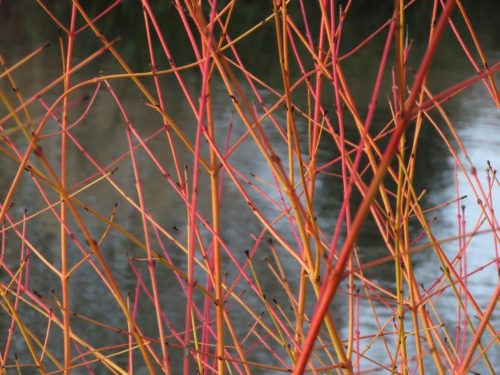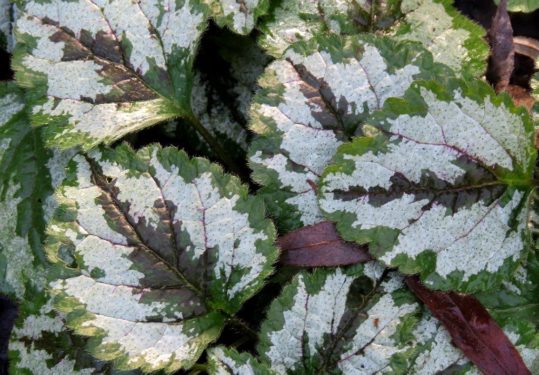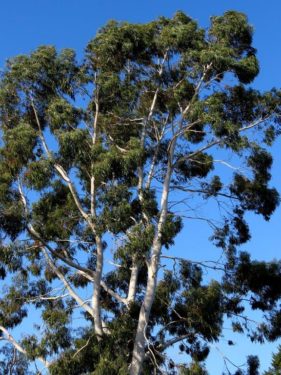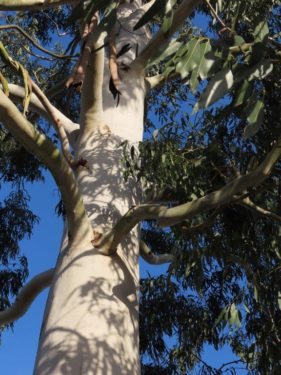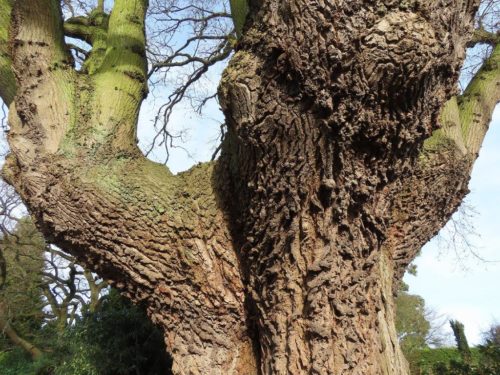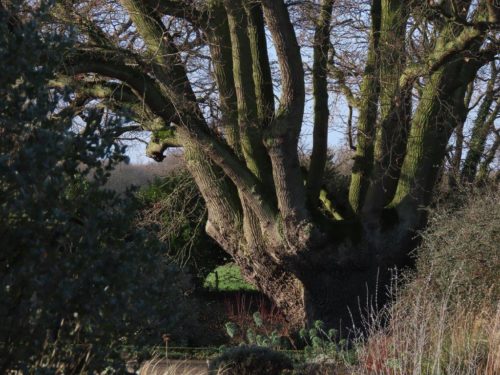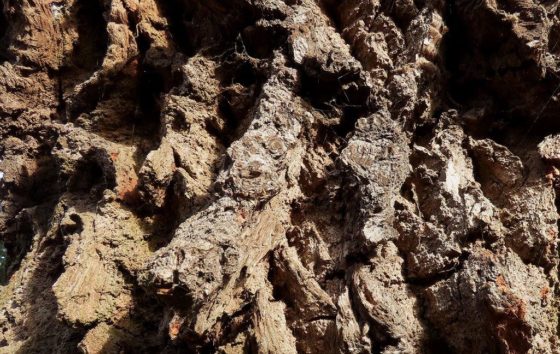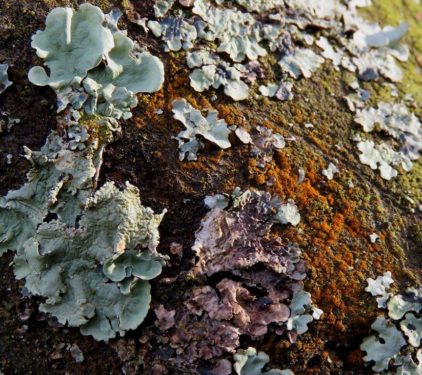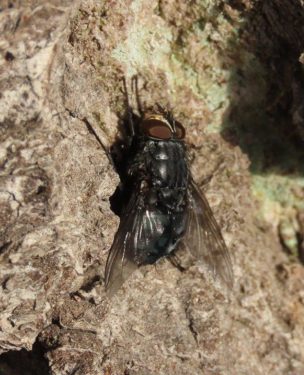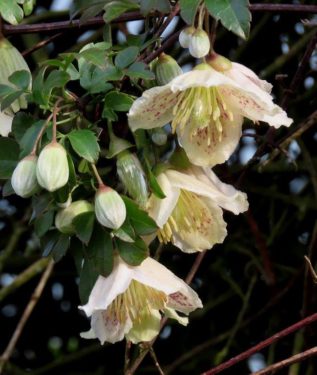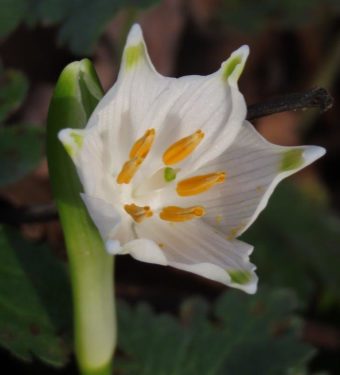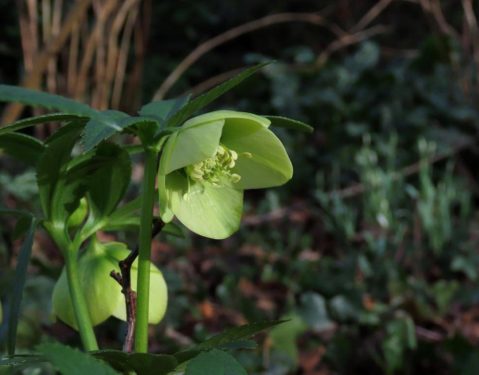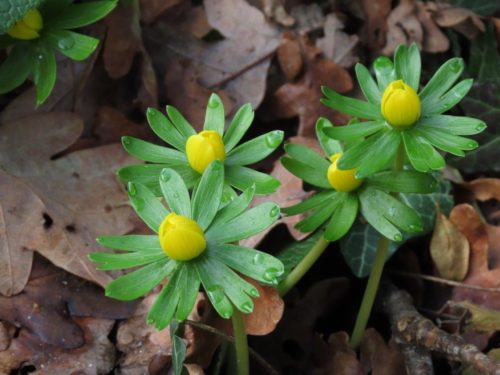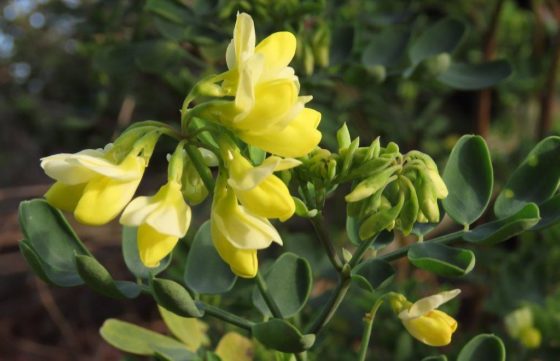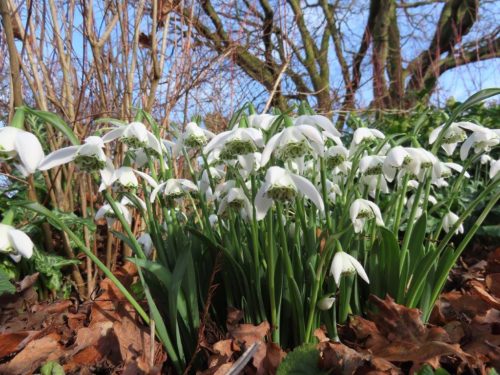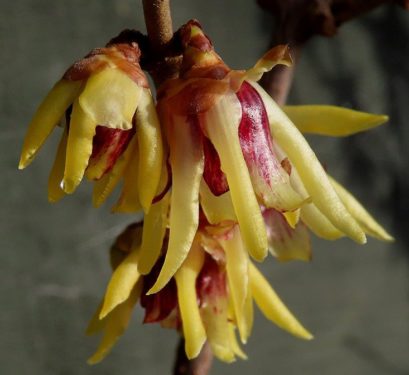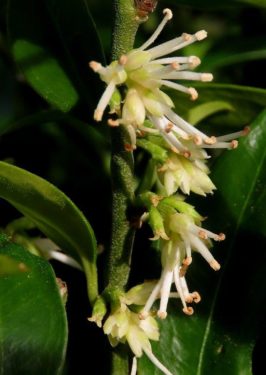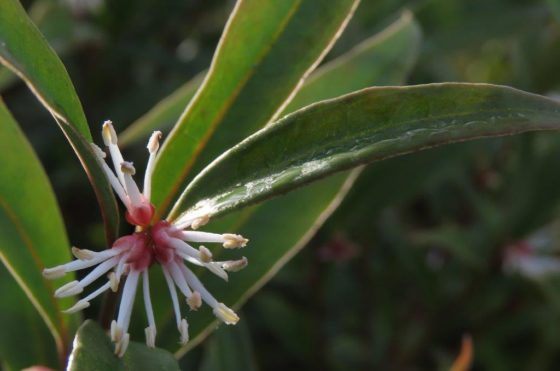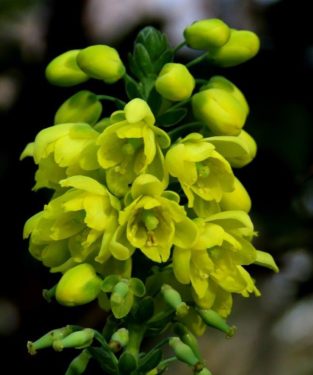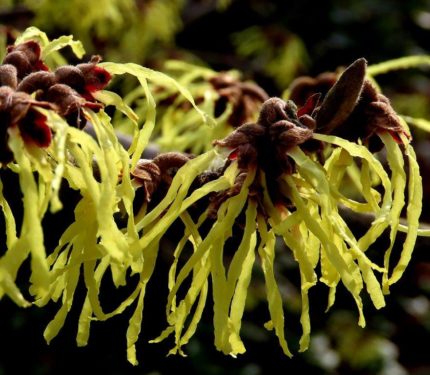‘Reawakening of the year’ hardly seems appropriate, as hitherto the winter slumber has been barely discernable, with few frosts, and bees and other insects around us all the time. As worryingly now seems to be the norm.
Maybe ‘renewal’ is a better term: last year’s leafy growth is playing its final role as a blanket protecting the coming seasons’ primordia from environmental extremes, before breaking down into the nutrients they need to fulfil their potential…
…while tussocks of grass and other plants again provide shelter for overwintering invertebrates, and sources of food to seed-eaters. In too many gardens – happily not Beth Chattos – these would have been ‘tidied up for the winter’.
New spring greens are already coming through, with added colour from variegations and coloured bark, perhaps more obvious and appreciated at this time when flowers are at a premium.
And likewise now is the time to appreciate the trees for what they are, liberated from the distraction of blowsy flowers all around. Standing for decades, centuries even, like old furniture they are so often ignored, but what a delight they are, hinting at the riches they have already given us and promises for the future.
Structure and texture are best appreciated when the sun shines, and this is when their trunks play a role for the few insects on show, sheltered spots for basking flies, even on a cold day like today.
On a warmer day, no doubt many more insects would have been evident, roused from winter torpor and needing to feed to replenish resources for any cold snaps to come. Herein lies the value of a garden: in January, the countryside is pretty much devoid of pollen and nectar sources apart from Gorse. But in a good garden, the ‘winter nectar gap’ can be closed, an essential feature in these times of climatic disruption.
Moreover, some of those plants have a scent that intoxicates even the most jaded human snout, from spicy Wintersweet to rich Witch-hazel, the delicate lily-of-the-valley fragrance of Mahonia to the ultra-sweet wafts of Sarcococca.
